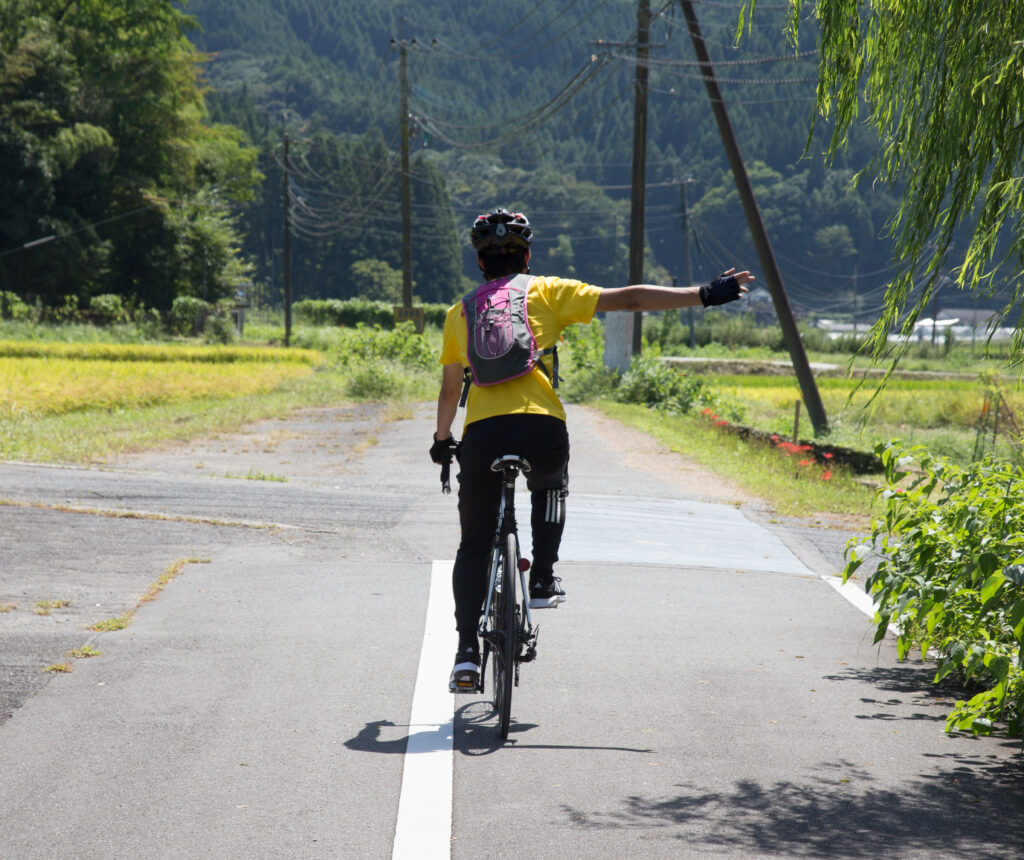Mastering Hand Signals for Road Bikes – Essential Tips for Beginner Cyclists

Did you know that mastering bike hand signals can make your cycling experience safer, more enjoyable, and even help build a sense of camaraderie among fellow cyclists? In this blog post, we will delve into the world of hand signals for road bikes, exploring their importance, the basic and advanced signals every cyclist should know, and some tips for effective signaling. Let’s get started on this journey to safer and more confident cycling! Key Takeaways The Importance of Hand Signals for Road Bikes Hand signals hold significant importance in the cycling universe due to several reasons. Unlike motor vehicles, bikes don’t come equipped with built-in signals to communicate their intentions to other road users. The absence of built-in signals necessitates learning and utilizing bike hand signals for cyclists at all experience levels, making bike hand signals important. Hand signals not only augment safety, but also are instrumental in fostering better communication between cyclists and other road users including motorists, pedestrians, and peers. Enhancing Safety Hand signals play a key role in ensuring cyclists’ safety by notifying other riders and road users of their plans and movements. For instance, to signal a left turn, extending your left arm straight out to the side is a common and easily recognizable hand signal used by cyclists. Indicating your intention to stop ahead of time is also crucial in averting potential collisions with cars or other cyclists, as bikes don’t have brake lights like motor vehicles. In cases of sudden or sharp stops, the call of “Stopping!” may be essential when there is insufficient time to make the signal. Improving Communication Clear communication between cyclists and other road users is vital to minimize the chances of accidents. Hand signals facilitate this communication, bridging the gap between cyclists and motor vehicles, which have built-in signals for their intentions. Utilizing hand signals to acknowledge other road users also encourages positive interactions and fosters harmonious road-user relations. As you can see, hand signals play a vital role in both enhancing safety and improving communication among all road users. Basic Hand Signals Every Cyclist Should Know Having underscored the significance of hand signals, let’s explore some basic bike hand signals that every cyclist should know. These include: Mastering these basic hand signals not only ensures your safety on the road, but also aids in effective communication with other road users, ensuring a smoother and more enjoyable riding experience. Slowing Down and Stopping To signal that you’re slowing down on a road bike, you can use the following hand signals: It’s recommended to use the hand signal before reaching a junction or a stop sign. In group rides, verbally announcing “Stopping” can be beneficial, as it allows riders to free up both hands for braking. Turning Left and Right Hand signals for left and right turns are key to conveying your planned direction to other road users. Extend your left arm horizontally to the side to signal a left turn. For a right turn, extend your right arm horizontally to the side. It is recommended to signal approximately 100 feet prior to the turn. Properly using these hand signals will help ensure that other road users are aware of your intentions, reducing the likelihood of accidents. Hazard Warnings Hazard warning hand signals function to alert cyclists of potential dangers on the road, such as potholes, debris, or obstacles. To indicate a hazard, extend your arm out in the direction of the hazard and wave your arm up and down in a repetitive motion. In case of an oncoming hazard, extend your arm out to the side of the hazard behind you and indicate across your back the direction in which the cyclist behind you will need to move to avoid it. Utilizing these hazard warning hand signals can greatly enhance the safety of all cyclists on the road. Advanced Hand Signals for Group Rides In addition to the basic hand signals, there are also advanced hand signals specifically tailored for group rides. These include taking turns at the front, navigating obstacles, and acknowledging other road users. Gaining proficiency in these advanced hand signals can notably enhance your group riding experience and help maintain a sense of camaraderie among fellow cyclists. Taking Turns at the Front Cyclists can employ hand signals to suggest when others should take the lead in the group. The elbow flick hand signal is utilized to signify that a rider is finished “pulling” and intends to move off to the side and take up a position at the back of the group. The “Come Through” hand signal involves extending one’s elbow outward to indicate the desired direction for the wheelsucker(s) to pass. Using these hand signals can help maintain a smooth and efficient group ride, ensuring everyone shares the workload. Navigating Obstacles The use of specific hand signals can simplify navigating obstacles in a group ride by guiding fellow cyclists. To indicate navigating around an obstruction in the road, signal the direction of movement behind the back with the arm on the side of the obstruction. Additional hand signals commonly used for navigating obstacles when riding in a group include signaling to decelerate, signaling to turn left or right, and signaling to alert of a potential hazard. Employing these hand signals when maneuvering obstacles in a group ride aids in directing other cyclists and guarantees the safety of all participants. Acknowledging and Thanking Other Road Users The use of hand signals to acknowledge and thank other road users fosters positive interactions and bolsters relations among road users. A thumbs up hand signal is a sign of gratitude, typically used when a rider moves over to provide more space or when another road user is courteous enough to wait for the group to pass. Utilizing hand signals to acknowledge other road users not only fosters a sense of camaraderie among cyclists, but also helps create a safer and more respectful environment on the road. Common Calls Used in Conjunction with Hand Signals Besides hand signals,


